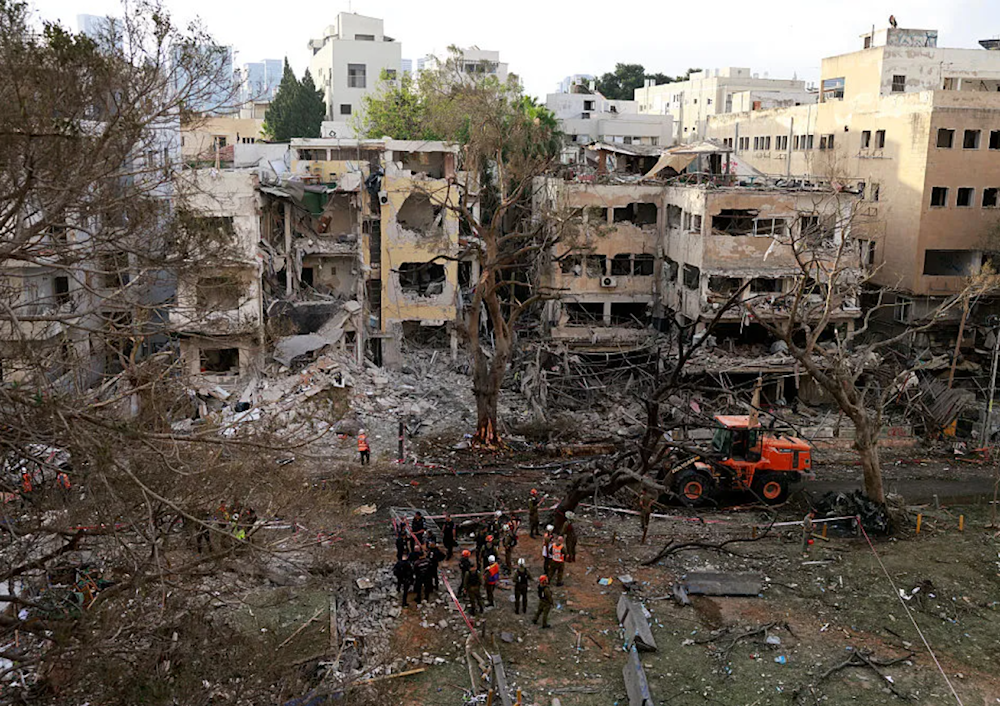Iranian strikes in "Israel" caused $3 bln in damages
"Israel’s" war on Iran has proven far more costly than with the Lebanese and Palestinian resistance movements.
-

Rescuers amid the aftermath of Iranian missile strikes in Tel Aviv (AFP)
"Israel" has estimated the damage from its 12-day war with Iran at 10 billion shekels (around $3 billion), covering repairs to missile-struck buildings and compensation for affected businesses.
The figures, released this week by the finance ministry and tax authority, highlight the unprecedented scale of destruction inflicted during nearly two weeks of rocket attacks.“This is the greatest challenge we’ve faced, there has never been this amount of damage in Israel’s history,” said Shay Aharonovich, director general of "Israel’s" Tax Authority, which is overseeing the compensation process.
The estimate does not include the cost of replenishing weapons and defense systems used during the conflict, an amount expected to significantly raise the total once assessments are complete.
Finance Minister Bezalel Smotrich suggested the overall cost of the war could reach $12 billion, while Bank of Israel Governor Amir Yaron gave a lower estimate of around $6 billion in an interview with Bloomberg TV. Either way, the economic toll comes at a time when "Israel" is already grappling with nearly two years of ongoing wars.
“Those ballistic missiles, boy, they took out a lot of buildings,” President Trump remarked Wednesday.
Payouts could reach $1.4 billion
Over the 12-day war, "Israel’s" economy came to a near standstill, with schools and businesses closed except for essential services. The government plans to compensate affected businesses, with the Finance Ministry estimating payouts could reach 5 billion shekels (approx. $1.4 billion).
That figure alone is nearly double what the government has paid for property damage since October 2023, including compensation to entire communities destroyed in Hamas’s attacks, as well as damages from Hezbollah rocket fire in northern occupied territories.
"Israel’s" war on Iran has proven far more costly than with the Lebanese and Palestinian resistance movements, primarily for two reasons:
First, while past attacks targeted smaller, rural communities, Iran launched ballistic missiles directly at major population centers, including central "Israel" and the wider Tel Aviv metropolitan area, home to over half the occupation's population and dense urban infrastructure.
Second, Iran’s weaponry is significantly more powerful. Its missiles can carry up to 500 kilograms of explosives, with fragmentation warheads that cause widespread destruction on impact.
The damage extended beyond residential neighborhoods: the Weizmann Institute of Science, "Israel’s" largest oil refinery in Haifa, and a major public hospital in the south were all hit during the strikes.

 3 Min Read
3 Min Read








